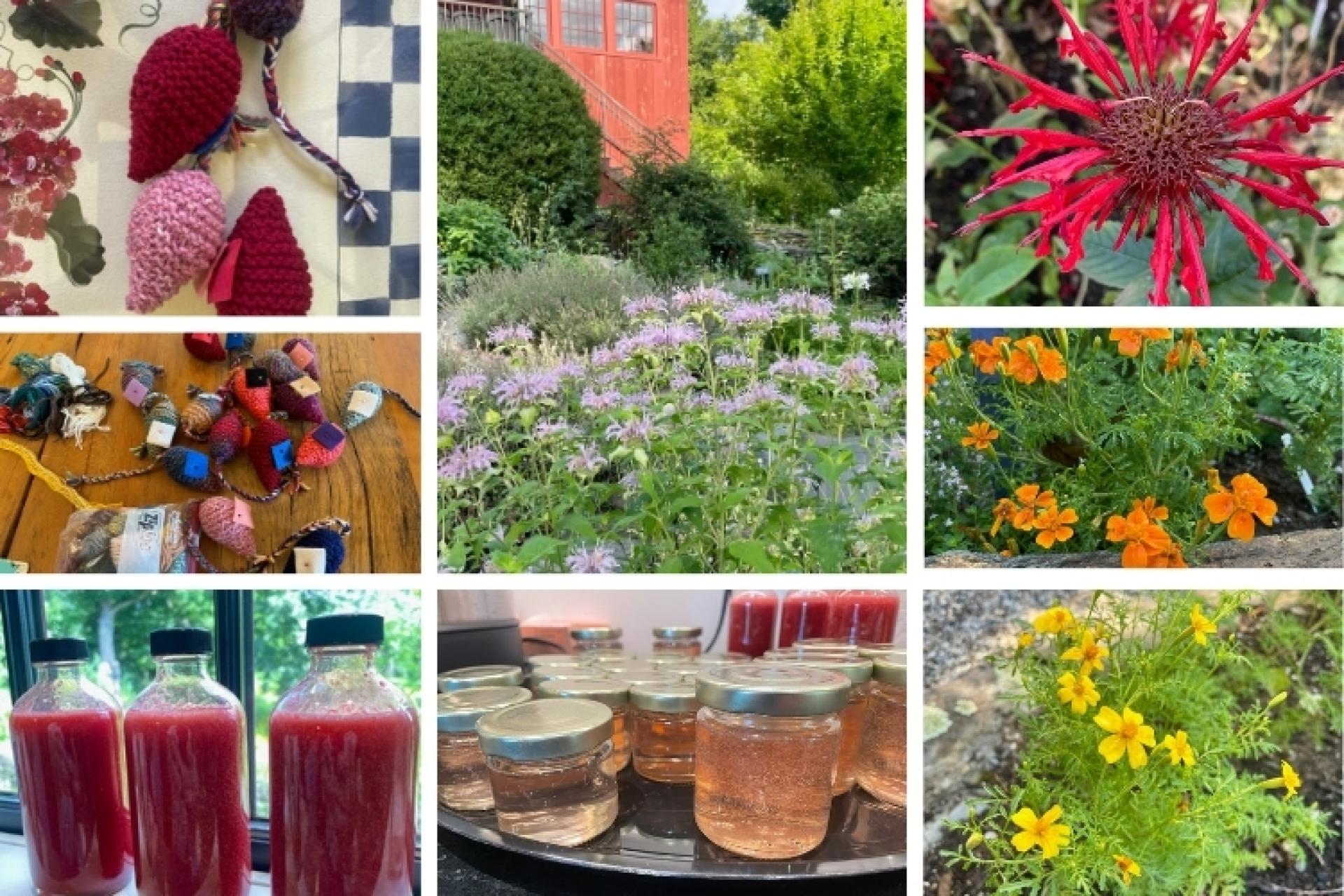You are here
What Is Happening in the BBG Herb Gardens and Kitchen This Week (July 16)?
What Is Happening in the BBG Herb Gardens and Kitchen This Week (July 16)?
By Barbara F. Smith
Our herb of the week putting on a show in the BBG Herb Display Garden is Monarda, 12 species of which are native to America. This carefree, long-blooming perennial herb is hardy to zone four and grows about 3 feet tall. Popular garden species include didyma and fistulosa. This genus has many common names, including bergamot, Oswego tea, bee balm, mountain mint, and horsemint, to name a few.
How shall we describe their flower heads? “Flamboyant pincushions,” “like a hat worn at a society wedding,” or “bristly” are a few descriptions writers have offered. The colors range from red to purple, pink, magenta and white. This easy to grow plant is susceptible to powdery mildew, so air circulation is vital. Leave the seed heads for winter birds to enjoy.
The flowers are very popular with pollinators, including native bees, butterflies, moths and even hummingbirds. The scents among the varieties vary from lemony to oregano.
Certain Native American tribes used Monarda leaves as a tea to soothe stomachache, to quiet respiratory issues (as a vapor), and relieve sunburn (when in a salve). Monarda/Oswego tea became so popular in colonial America that records show settlers sending bergamot seeds back to the United Kingdom in 1745.
Although not often used in cooking, bee balm leaves taste mildly of citrus, and, as such can complement or garnish a fruit salad, or perhaps in curries. The plants are recommended as a companion plant for tomatoes. Home gardeners may use dried bee balm flowers in potpourri and, commercially, they have been used to feed poultry and color dairy products.
Also blooming in the Display Garden are Tagetes, commonly known as marigolds, an old-fashioned flower that is a standby in many home gardens, with its long-lasting brilliant orange or yellow flowers and sharp smell. These New World annuals were named by Linnaeus after a “mysterious Etruscan religious god-child who sprang from a freshly plowed field with the wisdom of an old man” (S. Orr, The New American Herbal).
Native in the southwestern United States and south to Argentina, marigolds have been used in medicinal teas and cultivated as dye plants. In India, bright garlands of marigolds frequently enhance religious and festive celebrations.
In the Kitchen, the crew was busy preparing such popular products as Raspberry Shrub, Opal Basil Vinegar, Dill Vinegar, and Rose Geranium Jelly. Also underway by the Herb Associates as a group is the crafting of Catnip Mice, a perennial favorite souvenir among visitors to the Garden. You can find these, as well as all other Herb Associates freshly made, seasonal products in the Visitor Center’s Gift Shop.
Thank you for your interest in all things herbal at the Berkshire Botanical Garden!
The Berkshire Botanical Garden’s Herb Associates began in 1957 and have been making and selling products for the benefit of BBG ever since. At BBG, the Herb Associates oversee a display garden and production garden, both located near the Center House. Members/volunteers meet every Tuesday morning during the late spring through mid-autumn each year, coinciding when the gardens themselves are open to the public. Members plant, weed and tend the gardens, as well as harvest and process the variety of herbs.
Help Our Garden Grow!
Your donation helps us to educate and inspire visitors of all ages on the art and science of gardening and the preservation of our environment.
All Donations are 100 percent tax deductible.


